796.
Cape White-eye Zosterops virens (Kaapse Glasogie)
Order: Passeriformes. Family: Zosteropidae
Description
12 cm. This bird has a conspicuous ring of white feathers round the eye. The upperparts are green, the throat and vent are bright yellow, the breast and belly grey. Sexes alike.
Adult: Forehead and supraloral stripe yellow. Blackish line from base of bill across lores broadens around lower front margin of eye ring. Remainder of upper parts olive green, cheeks streaked with yellow. Tail blackish brown, rectrices with narrow green margins. Flight feathers blackish brown. Primaries narrowly edged green, secondaries and tertials more broadly edged green; alula blackish brown. Primary coverts blackish brown, edged green; lesser and median coverts olive green. Chin and throat yellow. Upper breast and flanks olive green, centre of breast, and belly, thighs and undertail coverts yellow, tinged green. Bill blackish brown, base of lower mandible greyer; short, warbler-like. Eyes dark brown to grey-brown; eye ring white, narrow (1-2 mm wide). Legs and feet brownish grey to blue-grey.
Juvenile is duller than adult.
Its colouring varies locally, from a greenish colour in Natal and the Cape to a more yellowish colour in the Transvaal highveld. Cape White-eyes occur in two colour forms, with grey-bellied birds present in the Western Cape, extending eastwards along the coastal areas and inland into the Eastern Cape, to about the Buffalo River near East London, from where the yellowish-/green-bellied birds are found. These birds occur along the eastern seaboard north-eastwards from the Eastern Cape into KwaZulu-Natal and also extend inland into the interior into Mpumalanga, Gauteng, North West and Limpopo Provinces. Grey-bellied birds also extend into the southern Free State and along the Caledon River northwards in the eastern Free State, sometimes as far north as Harrismith; they are also found in Lesotho. Yellowish-/green-bellied birds predominate in the north-eastern Free State and may be found as far south as Ficksburg and Ladybrand, sometimes even occurring near Thaba Nchu, between Ladybrand and Bloemfontein.
Similar species: Distinguished from Yellow White-eye by its greyish underparts and green (not yellow) upperparts. However, birds in Mpumalanga have pale green, almost yellow backs; here, only the greyish green vent and greenish (not yellow) head differentiate this species from the Yellow White-eye. The Cape White-eye lacks the obvious buff sides to the flanks and the breast of the
Orange River White-eye.
Birds in e Botswana and north-eastern highveld best identified by yellow (not olive-green) forehead and crown, and yellow (not greenish yellow) vent.
 Taxonomy
Taxonomy
Traditionally, the western nominate group and the eastern capensis group have been treated as separate species; the Orange River White-eye (
Z. pallidus) and the Cape White-eye (
Z. capensis). The latter can be further divided into two subgroups, the south-western
capensis subgroup and the eastern
virens subgroup (the so-called Green White-eye). All subspecies interbreed where they come into contact (including members of the nominate group with members of the capensis group of both subgroups in Free State). Some authorities (e.g. I O C) maintain the Cape and Orange River White-eyes as separate species.
The members of the capensis subgroup have a grey breast and belly, while the virens subgroup have a greenish-yellow breast and belly.
Z. c. caniviridis: Eastern Botswana to North-West Province and Limpopo Province. Greenish-yellow breast and belly
Z. c. atmorii: Inland Eastern Cape to Free State Province and Lesotho. Grey breast and belly
Z. c. capensis: Winter rainfall region of the Western Cape Province. Grey breast and belly
Z. c. virens: SW Mozambique to Swaziland and e Cape Province
Distribution
Near-endemic to South-Africa, occurring across much of the country, excluding the Kalahari Desert and extending into south-eastern Botswana.
Habitat
Forests, woodlands, savanna, exotic plantations and suburban gardens.
Diet
The Cape White-eye feeds mainly on insects, but also soft fleshy flowers, nectar, fruit and small grains. It readily comes to bird feeders. It eats a variety of invertebrates (especially aphids), fruit and nectar, foraging in pairs or small parties year-round. It mainly gleans prey from leaves and branches, occasionally plucking an insect from the air or ground.
Breeding
The breeding season is from September to December. Both sexes construct the nest in about 5 to 9 days. It is a small cup built of materials collected near the nest site. The nest is typically concealed in the foliage of a tree or bush, slung between a few branches and well hidden. The egg-laying season peaks from October to December. Two or four unspotted pale blue eggs are laid and incubated by both sexes. The eggs hatch between 11 and 13 days and the young fledge in another 12 to13 days. Both parents brood and feed the chicks that remain in the foliage surrounding the nest for some time. During this period they are very vulnerable to predator attacks.
Call
They are very vocal. The song consists of repeated long jerky phrases of sweet reedy notes, varying in pitch, volume and temp, usually starting off with
teee teee or
pirrup pirrup notes, then becoming a fast rambled jumble of notes, which may incorporate mimicked phrases of other birdcalls. Soft
tweee-tuuu-twee-twee.
Listen to Bird Call.
Status
Endemic. Common resident.
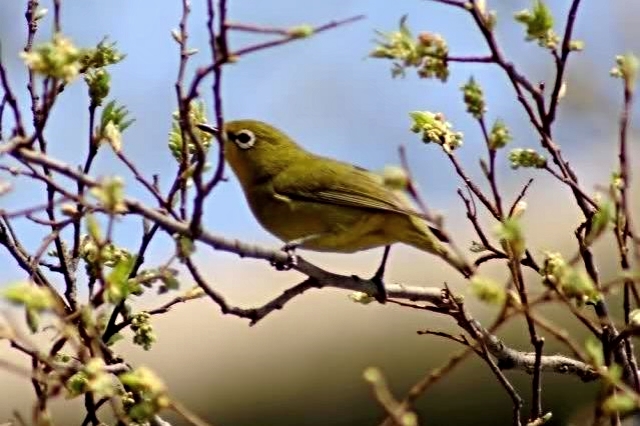
Eastern form with green wash
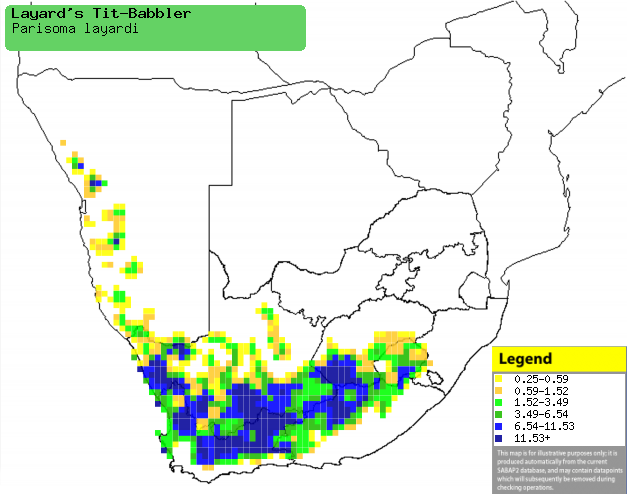



 © Nan
© Nan

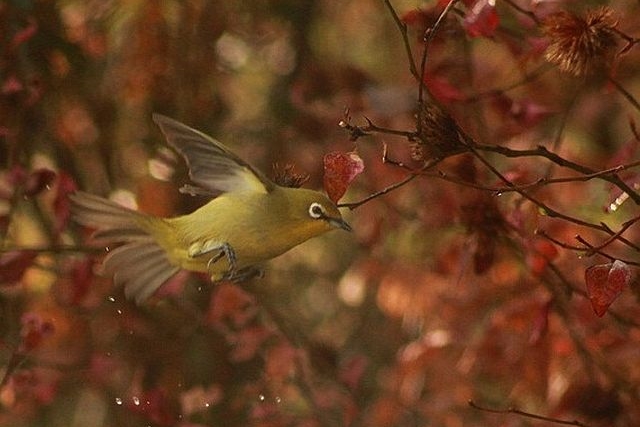 © Amoli
© Amoli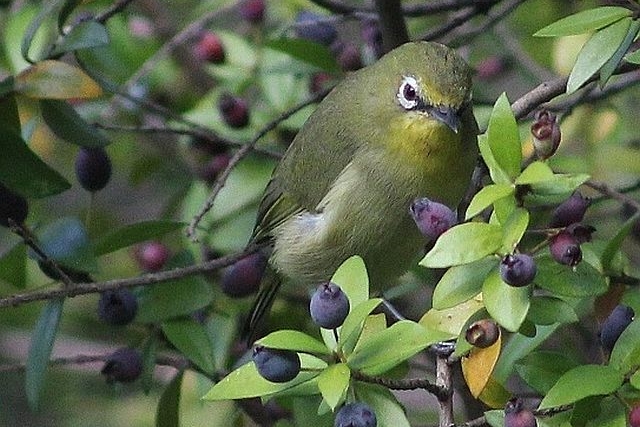 © Amoli
© Amoli © okie
© okie © nan
© nan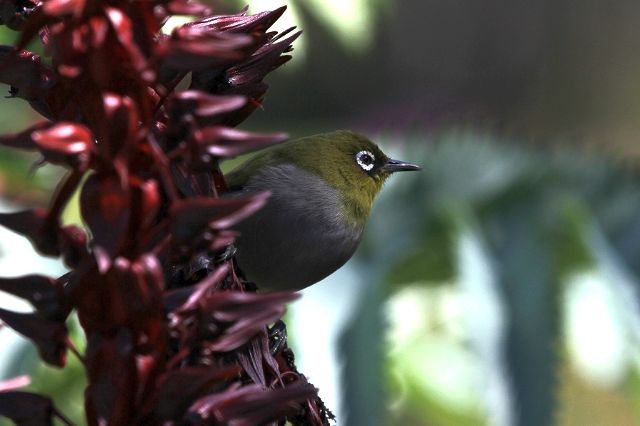 © Tina
© Tina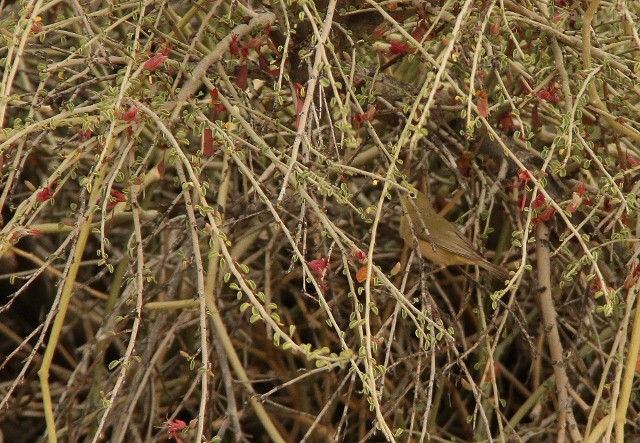
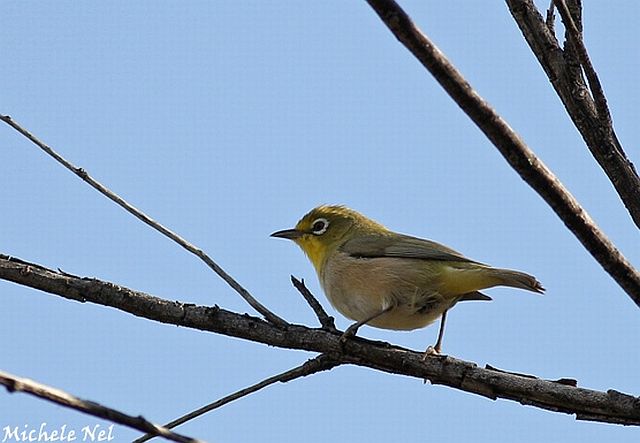 © Michele Nel
© Michele Nel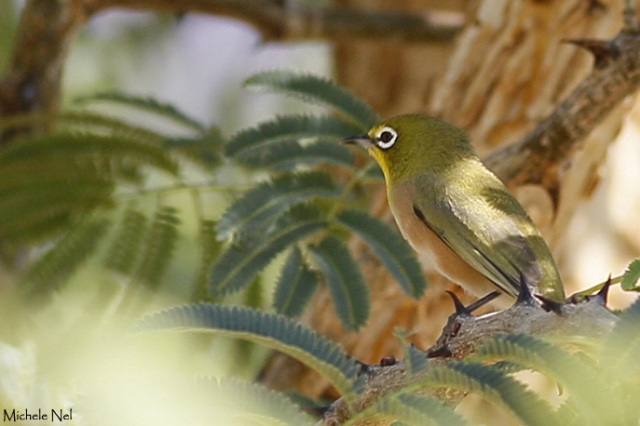 © Michele Nel
© Michele Nel © Michele Nel
© Michele Nel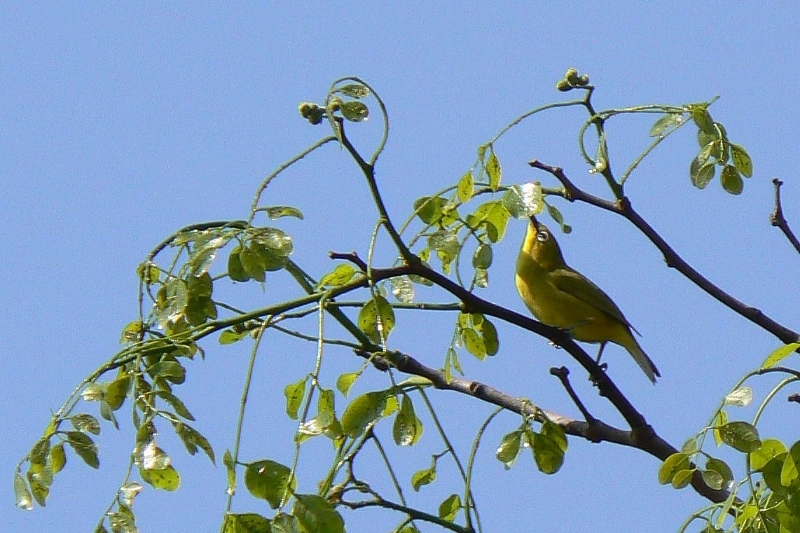 © Toko
© Toko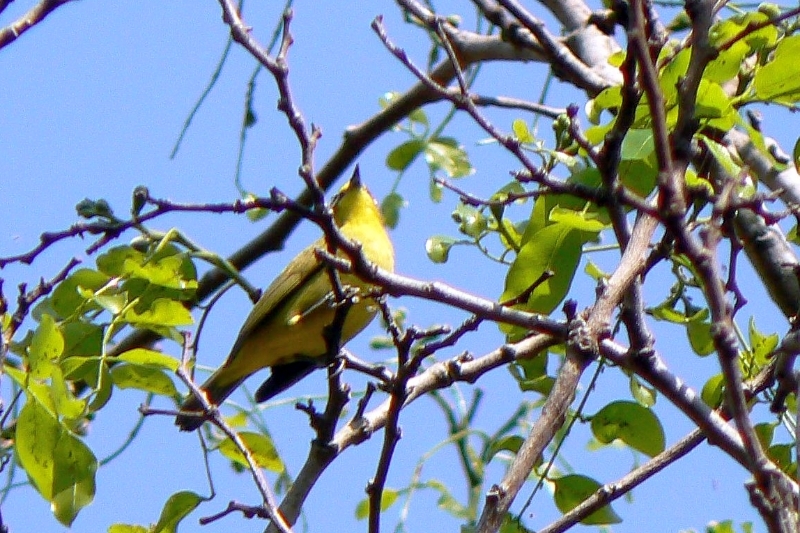
 © Toko
© Toko